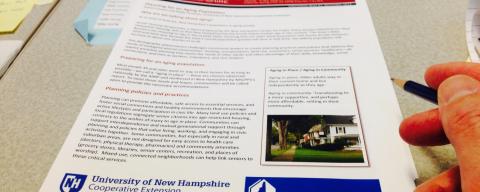The Best Laid Plans
The Mount Washington Valley is the state’s greatest tourist attraction, drawing millions of visitors to enjoy the area’s hiking, skiing, and other outdoor activities. Yet, in spite of the fact that these attractions have bolstered the region’s economy, Theresa Kennett, the director of the Mount Washington Valley Housing Coalition (MWVHC), believes “there is still more we need to do to ensure continued economic vitality and quality of life for the people of the region.”
In a region where 40 percent of the homes are second homes and competition for single homes and rentals is fierce, Kennett says a major challenge involves lack of affordable housing for working families. “Competition drives up housing prices and if housing remains unaffordable to working families, who will be the workforce that ensures the people of the region can access needed goods and services,” Kennett reasoned.
The MWVHC furnishes one of several mini-case studies offered in a new series of information briefs developed by UNH Cooperative Extension’s Molly Donovan, Charlie French, Sue Cagle, and Sharon Cowen to educate and inform lay planners on a range of topics that communities grapple with: from changing demographics, to planning for an aging population, to integrating health into the community planning process.
“Planning on the scale of that in the Mount Washington Valley requires participation from many people, not just municipal professionals,” Donovan said. “These tools distill what we’ve learned from years of working with communities into handy information, checklists, and resource listings.”
Extension developed the sheets as the educational outreach partner of the N.H. Community Planning Grant Program led by the N.H. Housing Finance Authority. The program provides assistance to communities to conduct work on local regulations that promote economic development, affordable housing and resiliency in the face of changing conditions.
